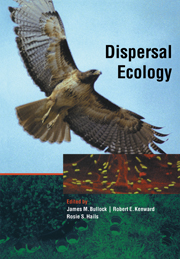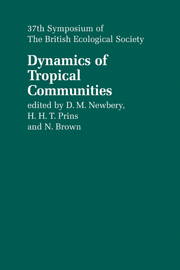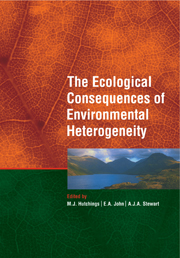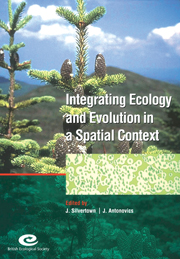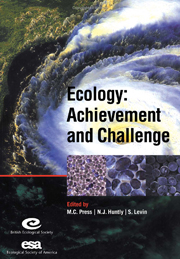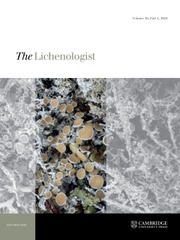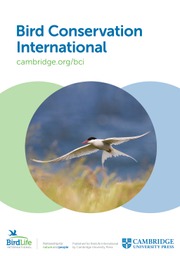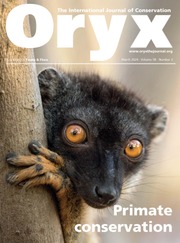Dispersal Ecology
Dispersal has become central to many questions in theoretical and applied ecology in recent years. This has come about through advances in measurement and modelling of dispersal, combined with the key role of spatial processes in current environmental problems. This volume, written by a team of leading ecologists, aims to provide both the advanced student and researcher with a comprehensive review of dispersal and its implications for modern ecology. It presents a broad overview considering plants, invertebrates, vertebrates and microorganisms in both terrestrial and aquatic environments. Up-to-date methods for measuring dispersal are assessed. The importance of dispersal in ecological theory is addressed in chapters on life history evolution, ecological genetics, population and metapopulation dynamics, invasions, landscape ecology and biogeography. Applied questions on topics such as spread of non-native species, effect of habitat fragmentation, species reintroductions, disease epidemiology, responses to climate change and impacts of genetically modified organisms are also considered.
- The way that plants and animals are dispersed affects whole areas such as landscape ecology, biogeography, and the biology of invasions
- This wide-ranging review indicates what is known about dispersal and what remains to be investigated
- First rate author team
Product details
August 2002Paperback
9780521549318
480 pages
247 × 171 × 30 mm
1.074kg
133 b/w illus. 31 tables
Available
Table of Contents
- Part I. Techniques for Dispersal Studies:
- 1. Measuring and modelling seed dispersal of terrestrial plants D. F. Greene and C. Calogeropoulos
- 2. Monitoring insect dispersal: methods and approaches J. L. Osborne, H. D. Loxdale and I. P. Woiwod
- 3. From marking to modelling: dispersal study techniques for land vertebrates R. E. Kenwood, S. P. Rushton, C. M. Perrins, D. W. Macdonald and A. B. South
- 4. The measurement of dispersal by seabirds and seals: implications for understanding their ecology I. L. Boyd
- 5. Inferring patterns of dispersal from allele frequency data A. F. Raybould, R. T. Clarke, J. M. Bond, R. E. Welters and C. J. Gliddon
- Part II. Dispersal in Behavioural and Evolutionary Ecology:
- 6. Sailing with the wind: dispersal by small flying insects S. G. Compton
- 7. Density-dependent dispersal in animals: concepts, evidence, mechanisms and consequences W. J. Sutherland, J. A. Gill and K. Norris
- 8. Seed dispersal: the search for trade-offs K. Thompson, L. C. Rickard, D. J. Hodkinson and M. Rees
- 9. Manipulating your host: host-pathogen population dynamics, host dispersal and genetically modified baculoviruses G. Dwyer and R. S. Hails
- 10. Gene flow and evolutionary ecology of passively dispersing aquatic invertebrates B. Okamura and J. R. Freeland
- Part III. Dispersal and Spatial Processes:
- 11. Niche colonization and the dispersal of bacteria and their genes in the natural environment M. J. Bailey and A. K. Lilley
- 12. Dispersal behavioural and population dynamics of vertebrates H. P. Andreassen, N. C. Stenseth and R. A. Ims
- 13. Dispersal and the spatial dynamics of butterfly populations R. J. Wilson and C. D. Thomas
- 14. Plant dispersal and colonization processes at local and landscape scales J. M. Bullock, I. L. Moy, R. F. Pywell, S. J. Coulson, A. M. Nolan and H. Caswell
- 15. Biogeography and dispersal R. Hengeveld and L. Hemerik
- Part IV. Applications of an Understanding of Dispersal:
- 16. Modelling vertebrate dispersal and demography in real landscapes: how does uncertainty regarding dispersal behaviour influence predictions of spatial population dynamics? A. B. South, S. P. Rushton, R. E. Kenward and D. W. McDonald
- 17. Invasion and the range expansion of species: effects of long-distance dispersal N. Shigesada and K. Kawasaki
- 18. Successful factors in the establishment of human-dispersed organisms A. N. Cohen
- 19. Oases in the desert: dispersal and host specialization of biotrophic fungal pathogens of plants J. K. M. Brown, M. S. Hovmøller, R. A. Wyand and D. Yu
- 20. Climate change and dispersal A. R. Watkinson and J. A. Gill
- Part V. Overview:
- 21. Overview and synthesis: the tale of the tail M. Williamson.

